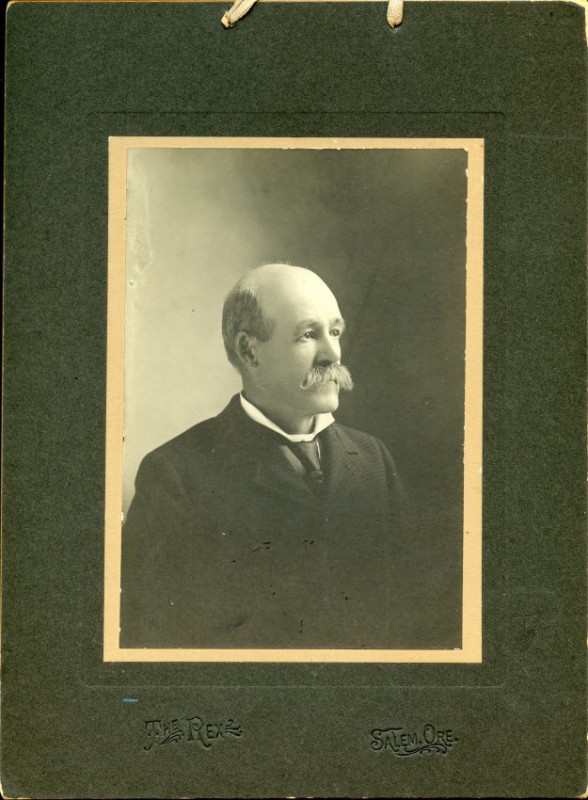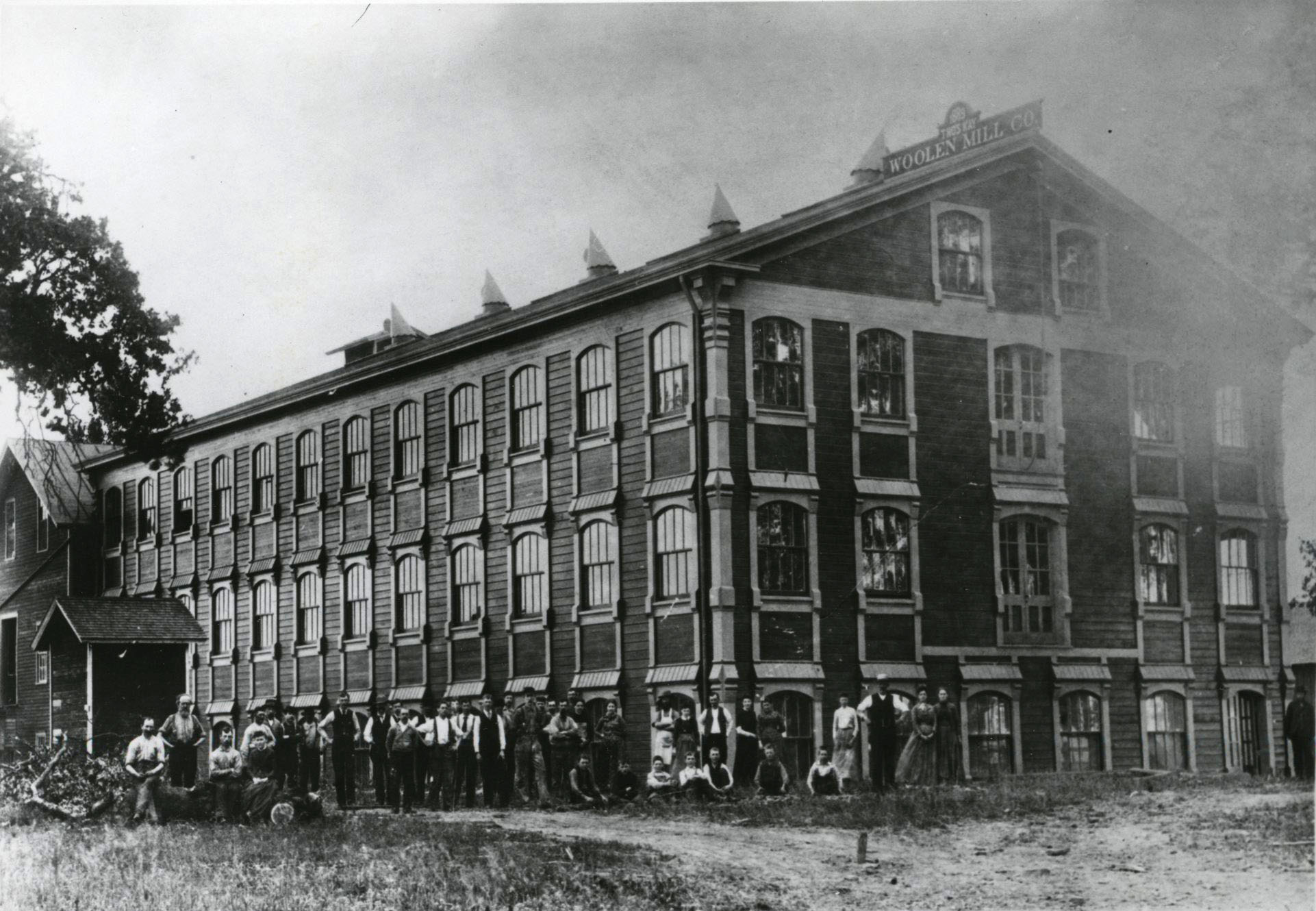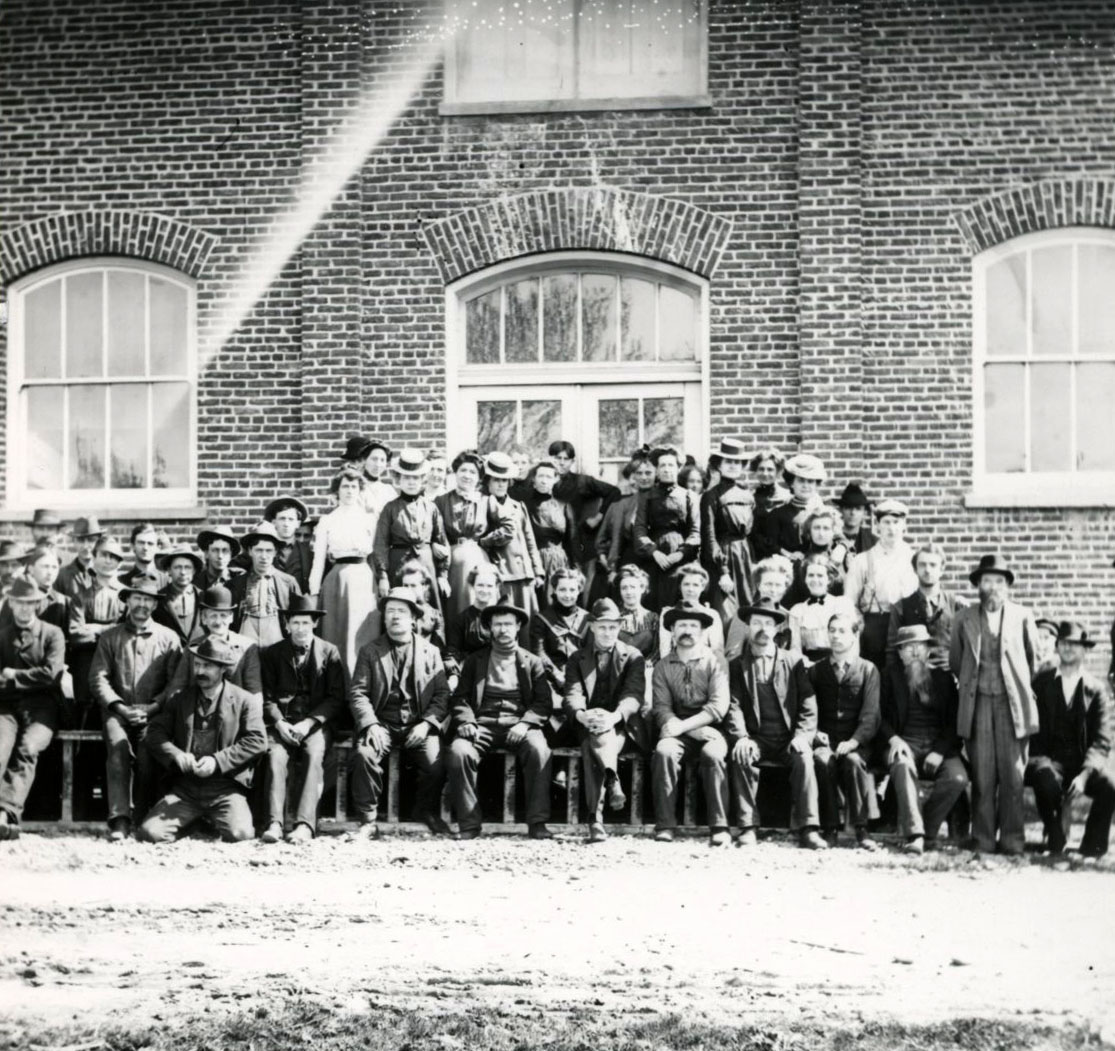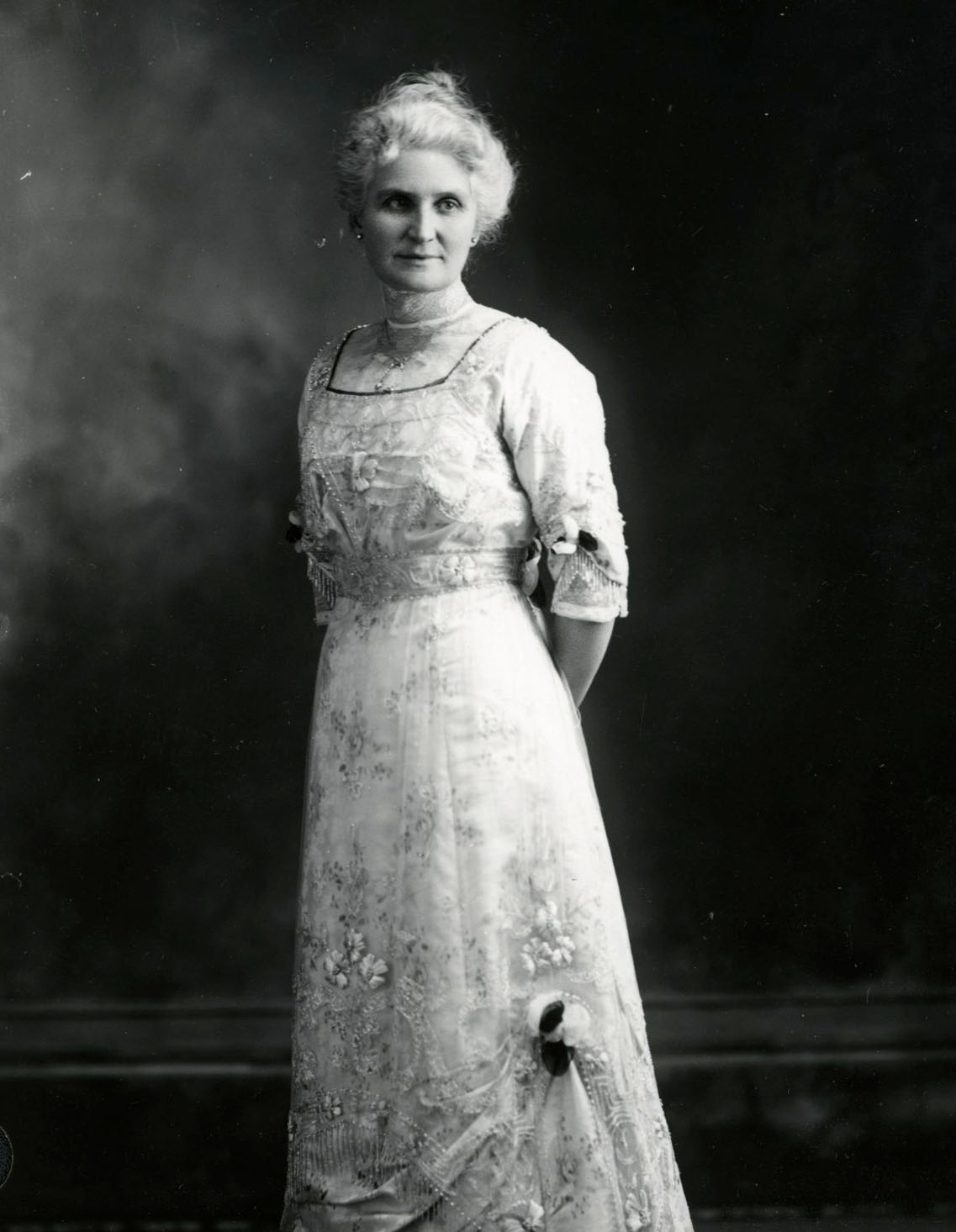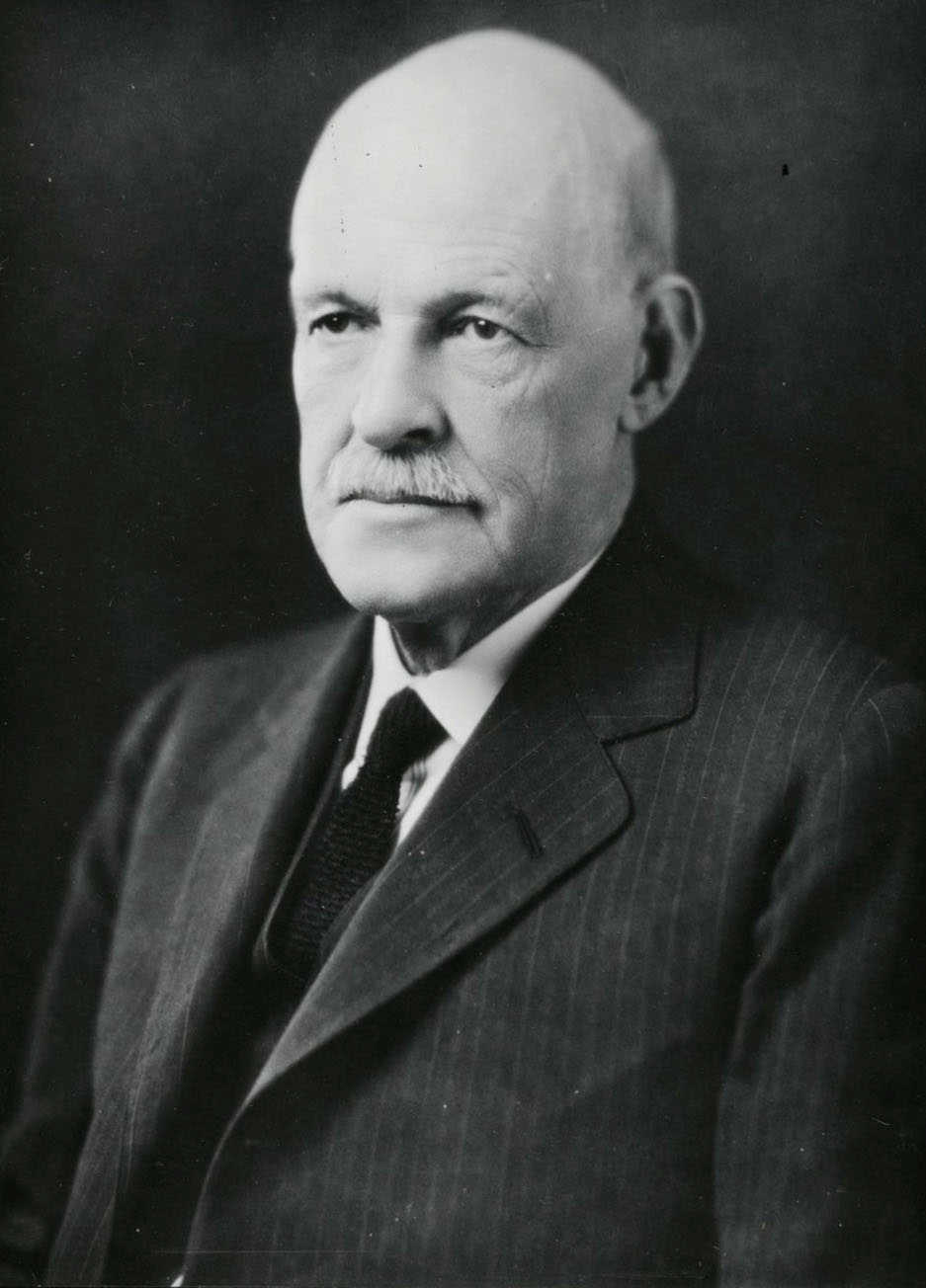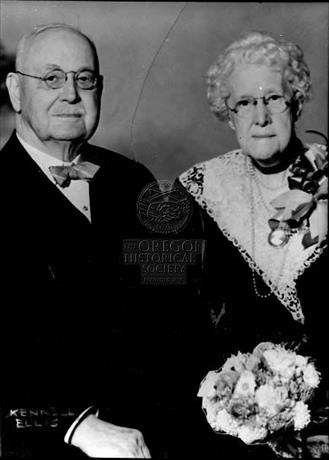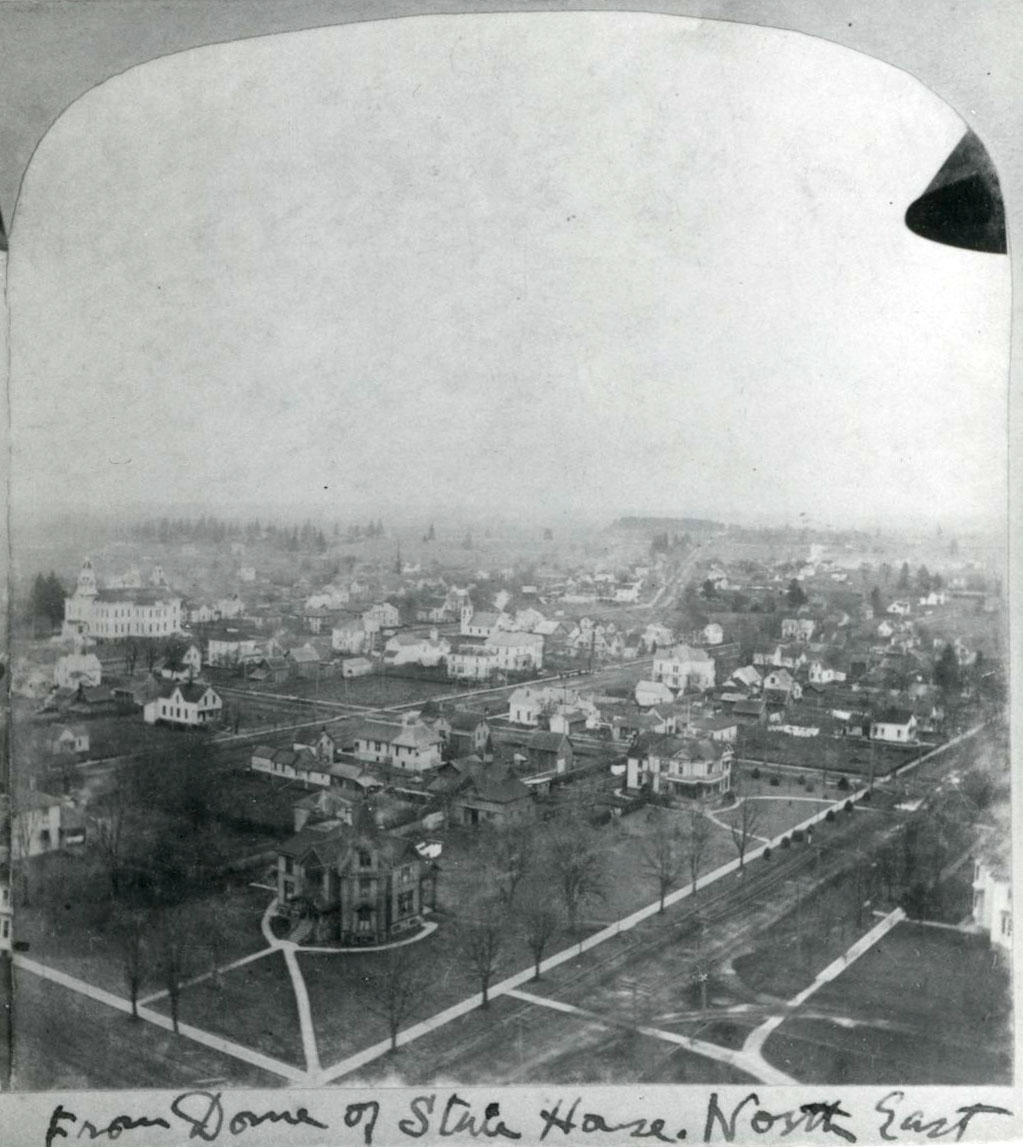Thomas Lister Kay, an early Oregon industrialist, built and operated the Thomas Kay Woolen Mill in Salem. The mill was the center of his life, and his colleagues thought him to be the most experienced woolen textile man in the state. With his vision, he employed skilled workers to produce quality woolen and worsted wool fabric, embraced innovative technology, and installed one of the first fire-suppressant building systems in Oregon. Today, the mill is part of the Willamette Heritage Center and stands as a legacy of Kay’s skills as a weaver and his understanding and knowledge of the industry’s equipment and processes.
Kay was born on June 24, 1838, to weaver Esias Kay and Elizabeth (Lister) Kay in the Eccleshill Parrish, in the heart of England’s textile weaving center near Bradford and Leeds. He had no formal education and, like other children at the time, began working in woolen mills when he was ten years old. Two years later, after his father died, Kay was apprenticed to a mill in Shipley, where he became an expert spinner and weaver of fine wool textiles. He also demonstrated an aptitude for mill equipment and was promoted to loom boss.
Seeking greater opportunities, Kay immigrated to the United States in 1857. For the next six years, he worked in several East Coast woolen mills, proving his skills as a weaver, mechanic, and loom boss and developing important connections with other mill workers. In 1863, John Worsley, an English friend and mill entrepreneur, invited Kay to be his loom boss in a new start-up mill in Brownsville, Oregon, about forty-five miles south of Salem. He seized the invitation.
After the Brownsville mill burned down in 1865, Kay worked at mills in Ellendale, Salem, and Ashland. He returned to the rebuilt mill in Brownsville in 1875. Under his leadership, the mill made profits each year until the owners dissolved the business in 1888. Kay used the $55,000 he netted from his $2,000 investment in the mill to finance his own textile mill in Salem. He also persuaded Salem citizens to invest $20,000 in the operation.
The Thomas Kay Woolen Mill was incorporated in 1889. Five years later, the mill was destroyed by fire. Undaunted, Kay and his board of directors voted to rebuild, and once again Kay made an appeal to Salem citizens, who raised $25,000 for the effort. While the mill was being rebuilt, Kay moved production orders and his skilled workers to a mill in Waterloo, about forty miles to the southeast, where he owned a controlling interest.
Kay’s forty years of experience led to innovations in his textile production. He oversaw the design of a new brick building, where fabric production moved systematically from one processing step to another. Architect W.D. Pugh designed a plan that saved time, money, and energy, and the building had one of the first sprinkler fire-suppression systems in Oregon. Kay received praise from the Salem community when the new mill opened in 1896, and he was true to his pledge to repay Salem’s investment. By November 1896, his mill was manufacturing the first worsted wool cloth west of the Mississippi River.
The mill was often referred to as a model for Oregon towns looking to increase their “home industries” and create jobs. Kay employed up to one hundred or so skilled and unskilled laborers at any one time and reportedly knew them all by name. His daughter Fannie recalls that he told her: “We are workers. We know the injustice that is sometimes imposed on those who work. Never impose on the weak because you are strong, but also do not let others impose on you.” Kay's employees, by accounts, admired and respected his expertise and the congenial work environment he provided; but he also modeled his business after the relatively low pay and high labor expectations typical for wool mills at the time. His weavers made about $30 a month, worked ten-hour days, and were responsible for the costs of mistakes.
Tom Kay and his wife Ann Slingsby were married for forty-three years and had ten children, five of whom preceded him in death. The family lived in a brick house on State and 12th Streets, down the street from the mill. Kay was a Salem City Council alderman from 1894 to 1896 and helped review the financing of Salem’s new city hall. The family belonged to the First Baptist Church in Salem.
Kay groomed his children to eventually own and operate the mill, insisting that they learn every facet of the operation. For nearly thirty years, his oldest child Martha Ann “Fannie” Kay (Bishop) (1857–1949) worked alongside her father. She was well versed in the mill’s operations, as were her sons, Clarence and Roy Bishop. Son Harry G. Kay (1869–1894) had his father’s aptitude for equipment and production, and the oldest son Thomas Benjamin (1864–1941) became assistant manager and salesman. Thomas was elected president and general manager when his father died unexpectedly in 1900. Fannie and her husband, Charles P. Bishop, served on the board of directors until 1905, when they sold their interest in the mill. By 1909, the Bishops and their two grown sons had purchased the Pendleton Woolen Mill. Kay’s descendants continued to manage the mill in Salem until it closed in 1962.
Thomas Kay’s legacy of expertise and innovation in producing award-winning woolen fabrics in Oregon has been preserved in the mill he helped design and build, which is now a museum run by the Willamette Heritage Center. Many of the mill’s original machinery, including a working water turbine, are on display, as well as exhibits on the family and their employees.
-
![]()
Thomas Lister Kay.
Courtesy Willamette Heritage Center, M3-1972-023-0006 -
![Thomas Kay stands third from right]()
Thomas Kay Woolen Mill, Salem.
Thomas Kay stands third from right Courtesy Oregon Hist. Soc. Research Lib., ba015883, 59802
-
![]()
Thomas Kay Woolen Mill workers, Salem.
Courtesy Oregon Hist. Soc. Research Lib., Cronise, photographer, 0165G028
-
![]()
Thomas Kay Woolen Mill, Salem.
Courtesy Oregon Hist. Soc. Research Lib., Cronise, photographer, 0165G029
-
![]()
Examining wool bales at the Thomas Kay Woolen Mill, 1947.
Courtesy Oregon Hist. Soc. Research Lib., Orhi084800, photo file 930e
-
![]()
Ersel Kay in his high school baseball uniform, 1908.
Courtesy Oregon Hist. Soc. Research Lib., Cronise, 0052G041
-
![]()
Cora Kay, married to Thomas B., 1913.
Courtesy Oregon Hist. Soc. Research Lib., Cronise, 0087G009
-
![]()
Thomas B. Kay, 1930.
Courtesy Oregon Hist. Soc. Research Lib., Journal, 01996
-
![]()
Charles Bishop and Fannie Kay Bishop, celebrating their 65th anniversary, Salem.
Courtesy Oregon Hist. Soc. Research Lib., 000852
Related Entries
-
![City of Salem]()
City of Salem
Salem, the capital of Oregon, is located at a crossroads of trade and t…
-
![Pendleton Woolen Mills]()
Pendleton Woolen Mills
Pendleton Woolen Mills opened in 1909 in a defunct woolen mill that had…
-
![Thomas Kay Woolen Mill]()
Thomas Kay Woolen Mill
Incorporated in 1889, the Thomas Kay Woolen Mill began manufacturing bl…
Related Historical Records
Map This on the Oregon History WayFinder
The Oregon History Wayfinder is an interactive map that identifies significant places, people, and events in Oregon history.
Further Reading
Lomax, Alfred L. "Woolen Mills of Brownsville, 1860-89." Oregon Historical Quarterly 31 (June 1930): 125-35.
_____. Later Woolen Mills in Oregon. Portland, Ore.: Binfords & Mort, 1974.
Stein, Harry H., and David Duniway. Spinning and Weaving Wool: The Men and Women of the Mill. Salem, Ore.: Mission Mill Village, 1985.
Willamette Heritage Center. Archives file FD 4 draw 4 Mill and People.

